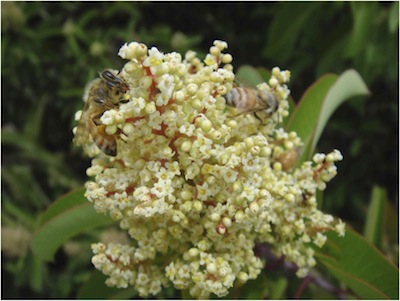We work on all aspects of plant reproductive ecology.
1) MATING SYSTEM EVOLUTION
Floral diversity in the Papaveraceae (pictures ©Ken Bowles)
The self-incompatibility locus enables plants to recognize and reject their own pollen to avoid the deleterious effects of self-fertilization. Members of the Kohn lab published the first natural population surveys of molecular variation at the S-locus. These studies showed the tremendous amount of historical information that could be gleaned from S-locus studies. As an example, shared ancestral S-locus polymorphism in the Solanaceae indicated that there was a single origin of incompatibility in the family and that all extant species exhibiting incompatibility do so because their ancestors were also SI. The fact of frequent and irreversible losses of SI in the Solanaceae meant that either SI was doomed to extinction within the group unless it conferred some advantage in terms of increased speciation or reduced extinction. It now appears that SI lineages suffer much lower rates of extinction than SC lineages, supporting the long-held belief that selfing in plants represents an evolutionary dead end. We recently published the first natural population data on self-incompatibility alleles in the Papaveraceae. Self-incompatibility in this family has a unique molecular basis making comparison to patterns seen in other systems interesting.
2) FLORAL BIOLOGY

Small, easily manipulable, features of floral displays often have remarkably large effects on fitness. This makes floral biology very amenable to evolutionary study. Kohn lab members have used Diplacus (Mimulus) aurantiacus to study both how its touch-sensitive stigma reduces conflict between the male and female functions of each flower and the causes of red vs. yellow flower color variation among hybridizing ecotypes in San Diego County. In both cases, experiments showed very strong fitness effects.
Touch-sensitive stigma of Diplacus arantiacus.
Movie courtesy of Dr. Michael Simpson SDSU.
3) POLLINATION

4) BIODIVERSITY
Southern California and northern Baja California is recognized as a global hotspot of endangered biodiversity due to the high frequency of endemic species across many types of taxa and because of the high level of anthropogenic habitat destruction. But our knowledge of what biodiversity is out there, particularly of diminutive organisms like insects and other invertebrates, is still poor. The San Diego Biodiversity Project is designed to engage all UCSD Biology undergraduates in biodiversity science by DNA barcoding local flora and fauna. Initial data collection leads to further questions approachable by talented undergraduates. Collaborations with the San Dieguito River Valley Conservancy, The San Diego Safari Park, and The San Diego Natural History Museum are in place. Graduate research could entail phylogenetic studies of San Diego plant communities from local plots to county-wide in order to assess the spatial scales at which environmental filtering and phylogenetic competitive exclusion operate.